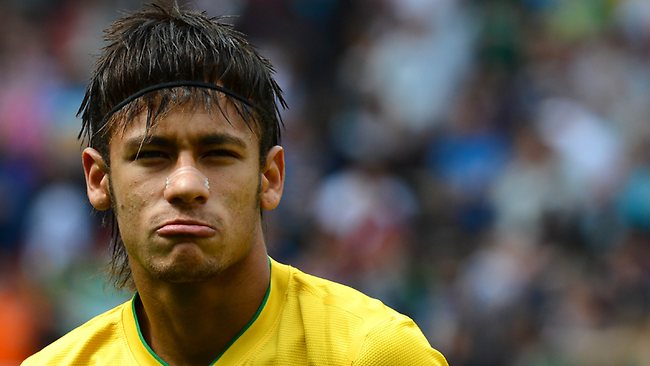
The soccer World Cup (yes, I persist in calling it “soccer”) is the one time in every four years I pay any sustained attention to the round-ball game. There is so much to love about the world’s most popular sport, played by its best players, with fanatical but mostly benign national supporters.
And yet by tournaments’ end I cannot bear to watch another dive, any more theatrical writhing on the ground or another posse of 20-something millionaires heatedly admonishing an official. Perhaps it’s something in the water at my place or a consequence of being thrashed too frequently in high school, but I prefer the stoic deference to authority of rugby union, in which backchatting the referee automatically moves the penalty 10m closer to your goal line.
So, with all the bright-eyed hope in the world game, I rose this morning at six to watch Brazil’s inevitable dismantling of Croatia. But Croatia’s Portuguese interpreter clearly couldn’t understand the memo, written as it was in Português do Brasil. Unaware they were supposed to be dismantled, they had the temerity to go ahead in the 11th minute.
A cracking contest, then, made even when Neymar slipped one just inside the Croatian post in the 29th minute. Very little remonstrating, some robust challenges but not too much play-acting, and very few dives. Until the 71st minute.
This is why soccer players dive. “Scientifically proven” as they say in pseudoscientific advertisements for fast-moving consumer goods. In this case, Fred’s dive fits perfectly with a scientific analysis of soccer diving by Gwendolyn David in 2011 and a team of collaborators at the University of Queensland.
In order to understand the dynamics of who dives and when, David viewed 2,800 falls in 60 matches of soccer across 10 professional leagues. David’s PhD supervisor and collaborator on the paper, Robbie Wilson, and Amanda Niehaus wrote about the paper’s findings and implications for The Conversation when the paper was published. As they put it:
It turns out that diving is more common when there’s more to gain by it: in the offensive half of the field – specifically, in or near the penalty box – and when scores between the teams are tied.
That’s exactly what happened this morning. Fred dived in a part of the field where he had everything to gain and almost nothing to lose. And it isn’t just Croatian supporters who thought the decision to award a penalty – the penalty that broke the tie – diminished an exciting game of football.
I’ll probably get up most mornings to watch the games, but I’d rather see referees take a harsher line on the theatrics. Like those zero-tolerance rugby referees, I’m pretty sure a few more yellow cards would tone down the histrionics and improve the overall spectacle. In fact David’s analysis shows that in leagues where refs are tough on diving, players do it less often.
My daughter was born the night John Aloisi scored that goal to put Australia through to compete in Germany 2006. And all Australian supporters know where that campaign ended up. Two words: Fabio Grosso.
This article was originally published on The Conversation.
Read the original article.